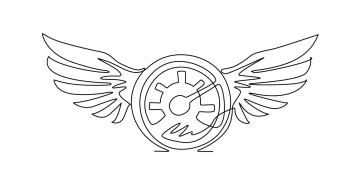How to keep your e-comm competitive with composable commerce and headless
November 24, 2022

The growth of the global e-commerce market is slowing, prices are rising and merchant revenues are falling. Many online stores are already struggling to survive. How can you stay competitive and improve your market position? Let's take a look at how composable commerce, headless and PWA technology can help you with that.
Changes in online shopping
Mobile shopping (mostly via smartphone) is growing every year. According to Business Wire data, more than 50% of online purchases in 2021 were made via mobile. The problem is that the shopping platforms are not adjusted to mobile, most of them were created at a time when people were shopping only from desktops/laptops.
The growing importance of m-commerce and the development of omnichannel are a challenge for many companies. It is just not enough to have a responsive website. Brands must provide a consistent user experience across all communication channels.
Composable commerce
Composable commerce can be defined as an e-comm environment composed of packaged business capabilities (or PBC). PBCs are software components that have a precisely specified business role (e.g. shopping cart, product catalog, search, etc.). PBCs are completely independent (whether they are run or replaced), they do not affect anything else, and they are more complex than microservices.
Customer requirements are constantly changing and you need to react quickly and flexibly. The goal of composable commerce is to combine the best available software from different external vendors and become more independent and flexible.
Advantages of composable commerce
Using the best software
Select and plug in the best possible solution according to your needs.
The best possible customer experience
The ability to define your own personalized CX.
Flexibility and agility
You define exactly how your frontend and backend will work. No vendor lock-in, you simply swap out components as needed.
High scalability
It's easy to monitor and run services in parallel on a continuous basis or during busy periods.
Speed
Rapid adaptation to customer requirements and implementation of new business models. Shorter time-to-market.
Happier developers
They no longer have to worry that a change in one area of a particular feature will affect the entire system.
Cost reduction
You choose only the features and suppliers you really need. A large part of the tasks can be performed by non-technical employees.
A tech stack ready for the future
The migration to composable commerce can be done all at once, or per-partes.
What does headless mean?
It is an architecture that allows the separation of the back end (the technology that stands behind) from the front end (what you see). This separation allows better optimization of services and their adaptation to user expectations. Headless solutions are API-driven, so the integration with other platforms or apps is much easier.

Traditional online store model consists of three elements:
- A database that stores all the product information (photos, descriptions, etc.).
- The back end, which is the layer that processes the information from the database.
- The frontend, which is the part visible to the user.
In a headless model, the front end communicates with the back end through an API. The growing number of touchpoints is forcing businesses to take a broader view of the services they offer, and programmers are looking for solutions based on headless technologies and microservices.
Headless is a good solution, especially for medium and larger companies that want to transform their corporate website into an online store. The problem arises as they try to combine a classic website with an online store that is many times more complex. That’s why it’s easiest to build a separate headless solution, import data, content, or product descriptions from the old version to the new one, and integrate the existing systems.
Advantages of a headless solution
Multiple views with one back end
You can customize the store view for different devices.
Better performance
Fewer database queries and updates with backend involvement.
Integration
Easy integration with existing systems.
Flexibility
You can use any language and framework, depending on your needs. It also has greater independence and interchangeability of components.
Customization
You don't have to use off-the-shelf solutions. You can customize both the back end and front end layers to suit your needs.
Testing
Headless applications are easier to test.
API
Defined backend API - you can easily integrate it with different front ends and services.
Scaling
For larger projects, you can split the front end between multiple teams, where each team develops one part of the app (e.g., catalog and cart), connected to the same back end using APIs to speed up development.
Headless & composable commerce
Headless commerce simply means the separation of services, the frontend and backend can operate independently. Composable commerce separates the frontend stack from the backend and selects the best technologies to build your e-com stack.
Using a headless approach is the first step towards a flexible architecture. It is usually an integral part of a composable commerce ecosystem. Composable commerce takes flexibility to the next level. Its parts can work independently - meaning that one piece of the puzzle can be replaced without impacting other parts of the system.
Headless approach:
- The frontend is separated from the backend, but it is still dependent on the underlying backend system.
Composable commerce ecosystem is:
- A system where each component (not just the frontend) is independent of the others and of platform vendors.
- A great way to adapt to changing trends using the best components.
Customer centricity
We want to make customers’ shopping experience even better, but what are customers interested in when shopping online? And what do they care about most? It’s speed! If a page doesn’t load within 3 seconds, 53% of people will abandon it.
Little improvement in site speed can significantly increase your conversion. Speed is the key to a great (not only) mobile experience and that’s the reason why many companies are switching to headless solutions combined with PWAs. Not only to speed up the e-commerce site, but also simplify its management.

Combination of headless and PWA
Many managers are opting to use headless technology to increase flexibility and scalability and ensure the best possible shopping experience for their customers. Headless often goes hand in hand with PWA (Progressive Web Application). PWA combines the benefits of traditional web and mobile apps and it is much faster and more pleasant to use.
Headless is a combination of simplicity and convenience using the latest technology. PWA is a combination of the best of both browser and app usage. Together they make a great team to improve the online store’s functioning and the user shopping experience.
Benefits of PWA
-
You don’t need to download a mobile app.
-
Faster than traditional web apps.
-
Better SEO.
-
Higher conversion rate and revenue.
-
More loyal customers.
-
More effective PPC.
-
Use of Push notifications.
Getting started with PWA
There are only two options on how to get started: either develop your own PWA or use an off-the-shelf solution. The custom solution has higher development costs and usually also lower quality (due to lack of experience). Another problem is that you're kind of reinventing the wheel: you're solving problems that have already been solved. For these reasons, you'd better choose an existing solution.
The differences among solutions disponible on the market include: the number and quality of integration, what backends and microservices are they ready for, what technologies they use and how easy and possible it is to customize the platform.

StoreFront X
One of the possible PWA solutions is an open source platform called StoreFront X. It is the best-performing PWA framework for Magento and Shopware, which outperforms similar products in all Lighthouse Performance Score metrics. It is fast, scalable, and easily customizable.
It is built with the VUE 3 framework, which offers modern development tools but is almost no different in working with it than previously used technologies. As open source, you will have no problem modifying the code if necessary.
Benefits of StoreFront X
✔ Improves conversion rate and customer experience
✔ Improves performance
✔ Reduces campaign costs
✔ Strengthens customer loyalty
✔ Reduces bounce rate
✔ High scalability and modular architecture
✔ A smart alternative to a mobile app
✔ Full SSR for better SEO

